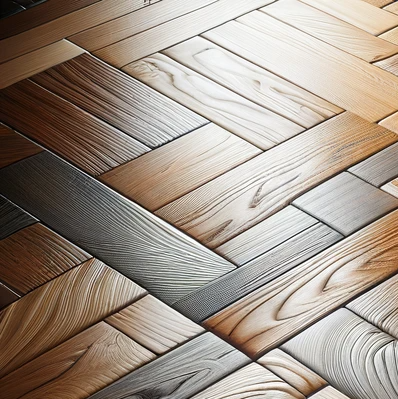When it comes to interior design, the breadth of flooring options is expansive. Yet, certain trends have managed to endure, retaining their appeal through a blend of beauty and functionality. Wooden floor tiles, a convergence of the aesthetic allure of wood, and the resilience of tile flooring is one such long-lasting trend.
Wooden Floor Tiles: A Fusion of Old and New
Traditional wooden flooring, with its natural charm and warmth, has long been a favorite among homeowners, designers, and architects. However, genuine wood flooring often comes with a hefty price tag, requires intensive maintenance, and isn’t suitable for areas with high moisture exposure like kitchens and bathrooms.
Wooden floor tiles offer a modern solution to these challenges. By emulating the look of natural wood and employing the strength and water resistance of porcelain or ceramic tiles, they provide an innovative flooring solution. Advanced digital imaging techniques are used to recreate the details of wood grains, knots, and color variations, yielding tiles that convincingly mimic diverse wood types, from oak to mahogany.
The Perks of Choosing Wooden Floor Tiles
If you’re considering wooden flooring for your space, it’s crucial to appreciate their inherent advantages:
- Durability: Wooden floor tiles exhibit remarkable resilience, offering resistance to scratches, stains, and water damage, making them ideal for areas with high foot traffic.
- Low Maintenance: Unlike real wood, wooden tiles don’t require polishing or waxing. A simple mop or vacuum will keep them clean.
- Versatility: Available in a plethora of colors, sizes, and patterns, wooden flooring allows you the flexibility to select a style that aligns with your interior décor.
- Sustainability: These man-made tiles are an eco-friendly choice compared to real wood flooring as their production doesn’t involve cutting down trees.
Wooden Floor Tiles Vs. Traditional Floor Tiles
While wooden flooring tiles bring the beauty of natural wood into your space, traditional floor tiles continue to hold their ground in interior design. Conventional tiles, whether they’re ceramic, porcelain, or natural stone, offer a diverse range of styles, from the timeless grandeur of marble to the rustic charm of travertine.
Your decision between wooden floor tiles and traditional ones will hinge on the aesthetic you wish to create and the specific demands of your space. For instance, if you’re seeking a natural, rustic look in a moisture-prone room, a wooden flooring could be the perfect choice.
In Conclusion
The spectrum of flooring solutions has broadened considerably in recent years, providing homeowners with an exciting array of choices. Among these, wooden floor tiles have emerged as a preferred option, fusing the timeless elegance of wood with the practicality of tiles.
Whether you’re renovating your home or planning the interiors of a new property, wooden floor tiles could lend a unique combination of aesthetic allure and practical benefits to your space. However, the key to the right flooring choice lies in understanding your needs, assessing various flooring options, and ensuring they match your personal style and the functional requirements of your space.

